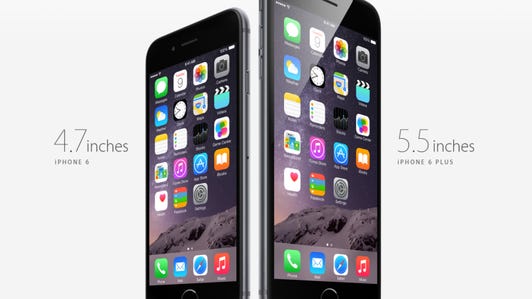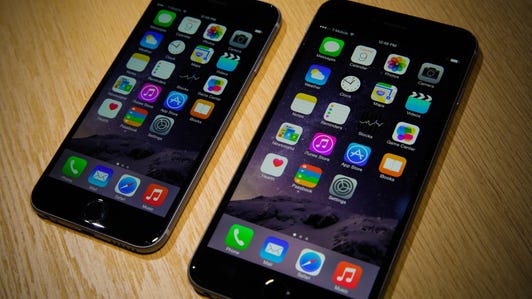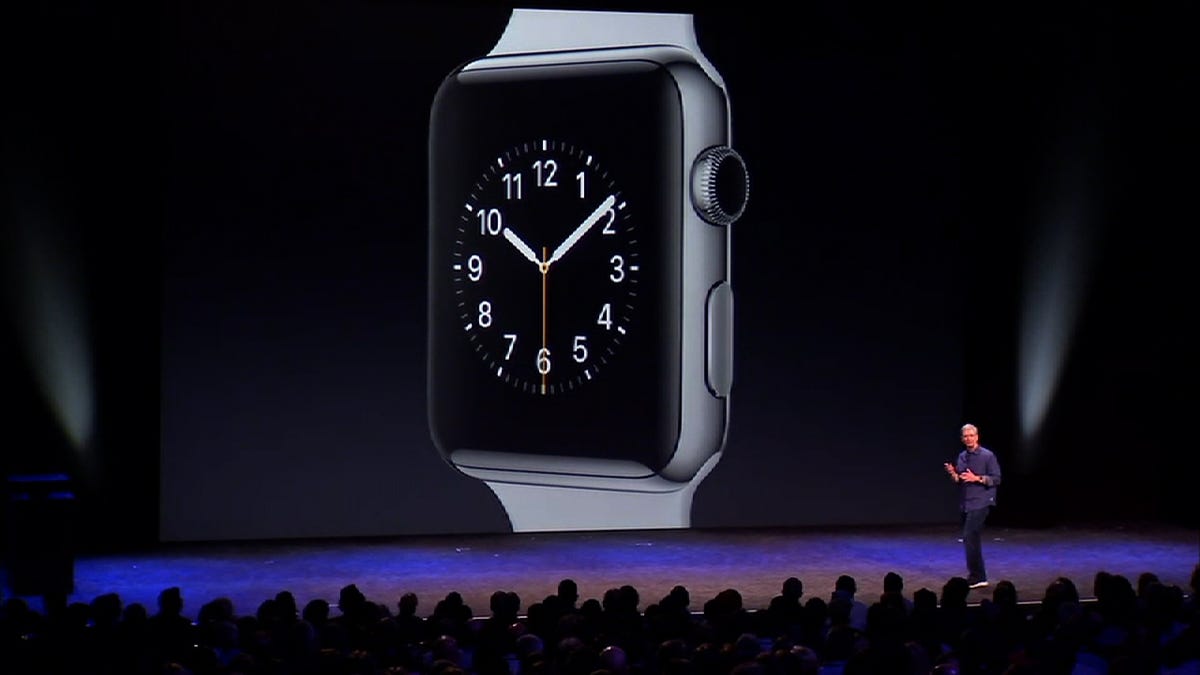
James Martin/CNET
CUPERTINO, Calif. — Apple may have shown rivals its hand by unveiling its first smartwatch months before it hits the market. But it also made sure consumers had a reason to wait for its launch.
By announcing its first-ever smartwatch more than a quarter before it’s available for purchase, Apple accomplished two things. First, it put the rumor mongering to rest by telling — and showing — consumers what they can expect from its wearable.
Second, and as important, CEO Tim Cook and his team, led by design chief Jony Ive, got every would-be smartwatch buyer to hold off purchasing a rival device from Samsung, Motorola, LG, and other competitors trying to nab a share of the emerging market for smart devices.
See also
- CNET’s first thoughts on the Apple Watch
- With its debut smartwatch, Apple aims to make wearables fashionable
- Apple jumps into wearable fray with Apple Watch smartwatch
- iPhone 6, iPhone 6 Plus, Apple Pay, and the Apple Watch: Here’s everything Apple just announced
Because really, who’s going to buy a smartwatch now without waiting to see exactly how the Apple Watch, as the device is called, stacks up?
Apple, which also wasn’t first to market with a digital music player, smartphone, or tablet, has an opportunity to do what it’s done in the past: deliver an elegant, easy-to-use device that showcases why it’s a must-have. That’s what its smartwatch rivals, dinged for creating big, clunky, and unappealing designs, have so far failed to do, proffering nice but not compelling features like fitness tracking and notifications.
“If [Apple] can make it practical, it can be a great success,” Sprint CEO Marcelo Claure told CNET. Claure believes Apple nailed it with its watch. “They waited, they let others go first, they learned, and I think they’ll launch a great product.”
Apple on Tuesday made its first jump into the hot smartwatch market by showing off three designs for its first wearable — the stainless-steel-cased Apple Watch, the aluminum-cased Apple Watch Sport, and the 18-karat-gold-cased Apple Watch Edition. The smartwatches go on sale early next year at a starting price of $349. The devices must be paired with an iPhone, and are compatible with the iPhone 5 , 5C, 5S, 6, and 6 Plus.
Apple Watch keeps up with the times (pictures)


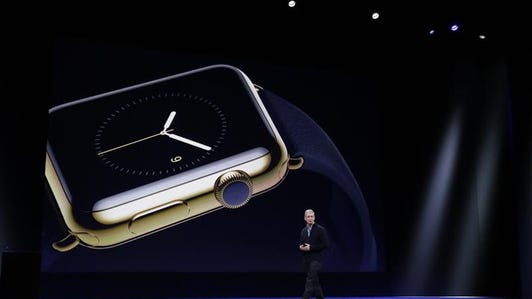

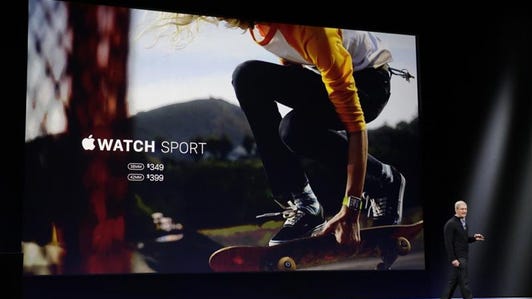

Cook, introducing the Apple Watch before more than 2,000 people, called the smartwatch a “breakthrough” product. He described it as a “comprehensive” health and fitness device, walkie-talkie, and remote control for the Apple TV streaming-box. Those factors alone set the Apple Watch apart from other smartwatches on the market, which tend to simply track steps, provide notifications, and run very basic apps.
But Apple went even further — creating what Morgan Stanley analyst Katy Huberty called a “Swiss Army Knife” sort of wearable. It included a Near Field Communications, or NFC, chip in the watch to enable mobile payments. It put a haptic feedback engine in the device so that it vibrates when receiving an alert or a being given a direction in programs like Maps. Apple included a digital touch feature to allow two people to communicate quickly through taps, drawings, and by sharing their heartbeats.
The company also placed a big emphasis on design, making sure the watch is fashionable and something people actually want to wear. While at first glance it resembles Samsung’s Gear smartwatches and other wearables already on the market, it provides more ways the wearer can customize it. Apple will provide a range of bands in various materials — including leather and metal — so users can tailor the product to their style. And there likely will be bands from third-party vendors in the future, as well.
None of those is the one killer feature that makes an Apple Watch irresistible, but put together, they’re hard for today’s other smartwatches to beat.
“Current wearable makers must raise their game to respond to Apple,” said analysts from research firm IHS Technology.
Samsung, currently the biggest smartwatch maker, declined to comment.


Now playing:
Watch this:
Hands-on with Apple’s Watch
1:59
Estimates vary on the potential size of the wearables market, with some analysts predicting it to soar and others forecasting its demise. Market research firm IDC projects that from the end of this year to 2018, wearable shipments will increase nearly sixfold to 111.9 million units. Forrester Research, however, predicts that by 2016 the functionality of smartwatches and fitness bands will be absorbed by other devices such as smartphones and sensor-laden headphones.
So far, the wearables market remains segmented. Very few smartwatches, aside from the Pebble and Martian, work with both Apple’s iOS operating system and Google’s Android software. Apple likely won’t steal customers away from Android simply with its watch. But when that watch is combined with Apple’s sleek, bigger screen iPhone 6 devices, it could prove hard to resist.
Buying Time
Introducing the wearable at least four months before it hits the market gives developers time to build apps using Apple’s WatchKit platform. The Apple Watch could have thousands of apps when it launches in early 2015. By comparison, Samsung’s Gear smartwatch, updated with the Gear S last week, has only about 1,000 apps designed to work with the Tizen operating system a year after the line first hit the market.
Apple is already touting some big app partnerships. Starwood Hotels will let people unlock their rooms by tapping the watch, and American Airlines will allow people to check in for flights with the watch. Pinterest will provide recommendations and directions based on a user’s location and the person’s pins. BMW will show users where they left their cars — and give them directions on how to get there.
MLB will provide sports news, Lutron plans to let users control the lighting in their homes, Honeywell will let consumers adjust their thermostats, and Nike’s app allows people to challenge friends to a run. And Twitter notifications allow users to favorite or retweet an item directly from the message.
Mike McCue, CEO of the popular news-sharing app FlipBoard, will make an app for the Apple Watch, though it will take some time for Flipboard to figure out what it will be like.
“I was truly inspired [by the Apple Watch],” McCue told CNET. “As an industry, everybody’s been working to get to this point for years and years … where technology crosses into the world of fashion and is far more personal. … It’s a whole new level.”
Still, there’s no guarantee Apple’s watch will be a hit. It has to be tethered to an iPhone, so only iPhone 5 and newer owners can use the device. It’s expensive, with a starting price of $349. Samsung’s Gear 2 retails for $300, and its Gear Fit fitness band costs $200. And the features may still not be enough to make it a must-have. Also, Apple’s early 2015 launch misses the key holiday selling season when the Apple Watch could be a handy stocking stuffer.
Apple’s likely to have a happy holiday, anyway, with its new iPhone 6 models on the market. It’s Samsung and all the other wearables makers who might not be so jolly.
Updated at 1 p.m. PT with Samsung declining to comment.
Corrected at 1:40 p.m. PT to reflect that Honeywell’s app will control thermostats, while Lutron’s app will control lighting.
The Apple iPhone 6 and iPhone 6 Plus have arrived (pictures)


